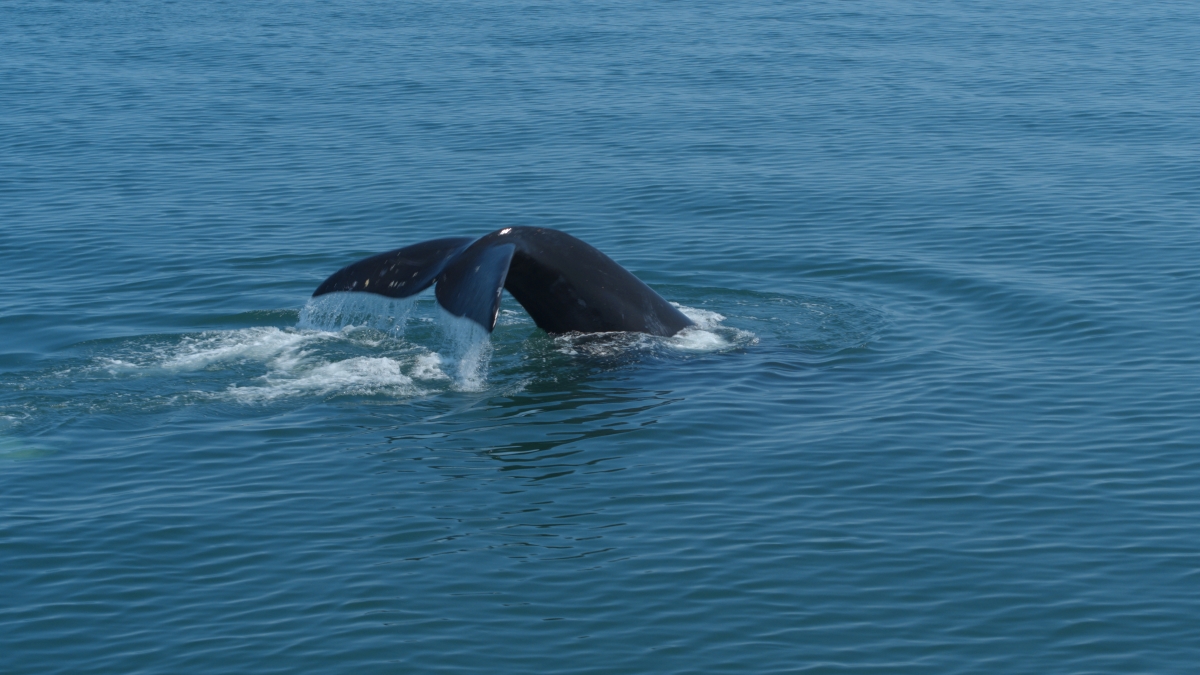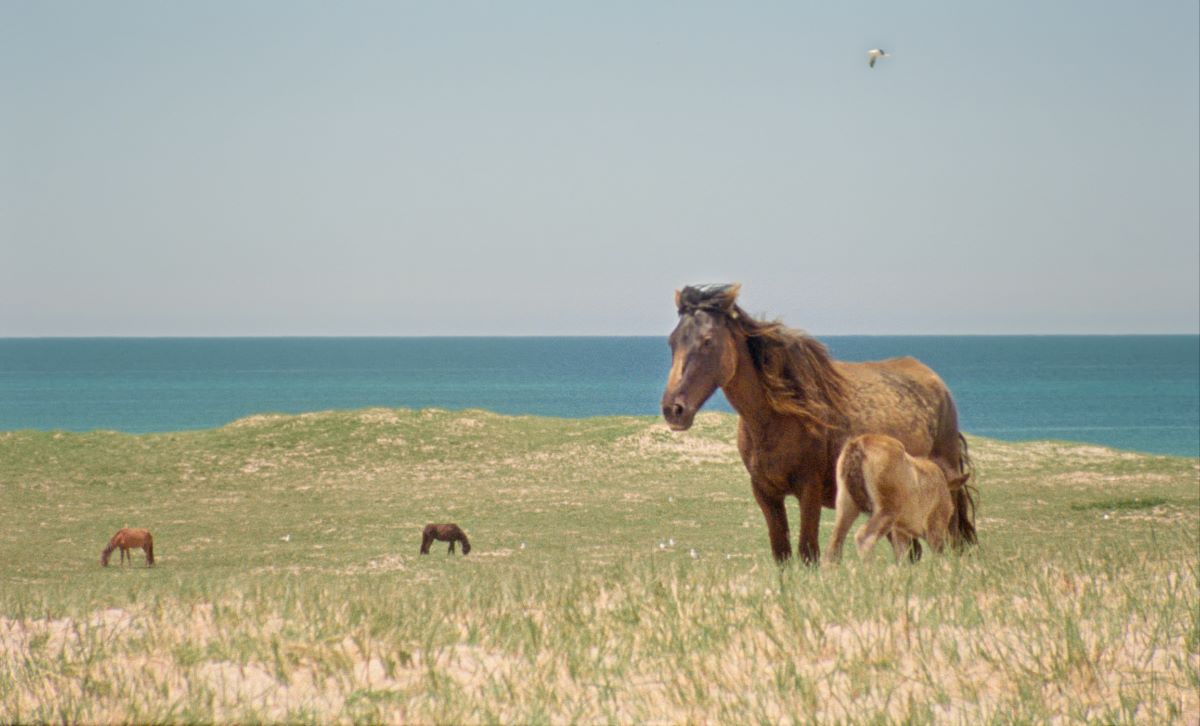I was a fourth-year philosophy student when Donna Haraway’s Cyborg Manifesto first fell into my lap. Accustomed to mostly dead, mainly male authors and frequently arcane texts, Haraway’s “Ironic Dream of a Common Language for Women in the Integrated Circuit” was a welcome revelation. A Cyborg Manifesto rejects myths of femininity in which the female body has an intuitive grasp of nature. The cyborg is a playful metaphor, a synthetized being that mocks dichotomies like human/machine and human/ animal.
It was only later that I discovered the Manifesto’s place in a tradition known as ecofeminism. I became fascinated by ecofeminism the way one becomes fascinated by any theory that feels intuitively true. Ecofeminism is holistic. It contends that colonialism, capitalism, oppression of women, and the climate crisis are inextricably linked phenomena—results of a Western cosmology defined by dualistic thinking, which takes existing forms of difference and renders them as hierarchies. Think human/nature, reason/emotion, subject/object, freedom/necessity, and so on—the former characteristics associated with a “higher,” male, rational being, the latter with female being and nature. Ecofeminists rally for an end to all relationships of power and dominance, which they see as mutually reinforcing. They yearn for a morality based on reciprocity.
In environmental documentary today, there are several female filmmakers picking up on threads of ecofeminism. Recent films by Heather Hatch, Jennifer Baichwal, and Nadine Pequeneza expose some of the destructive power relationships that divide humans from nature and sanction environmental damage. These filmmakers search for new ways of thinking, feeling, and comprehending compatible with a sustainable earth. Their work is emotionally challenging and philosophically rich, well worth watching and thinking about. As we enter an era of environmental collapse, they may well represent the kind of art we need, films which shows us the way into the problem while at the same time hanging on to a vision of the way out.
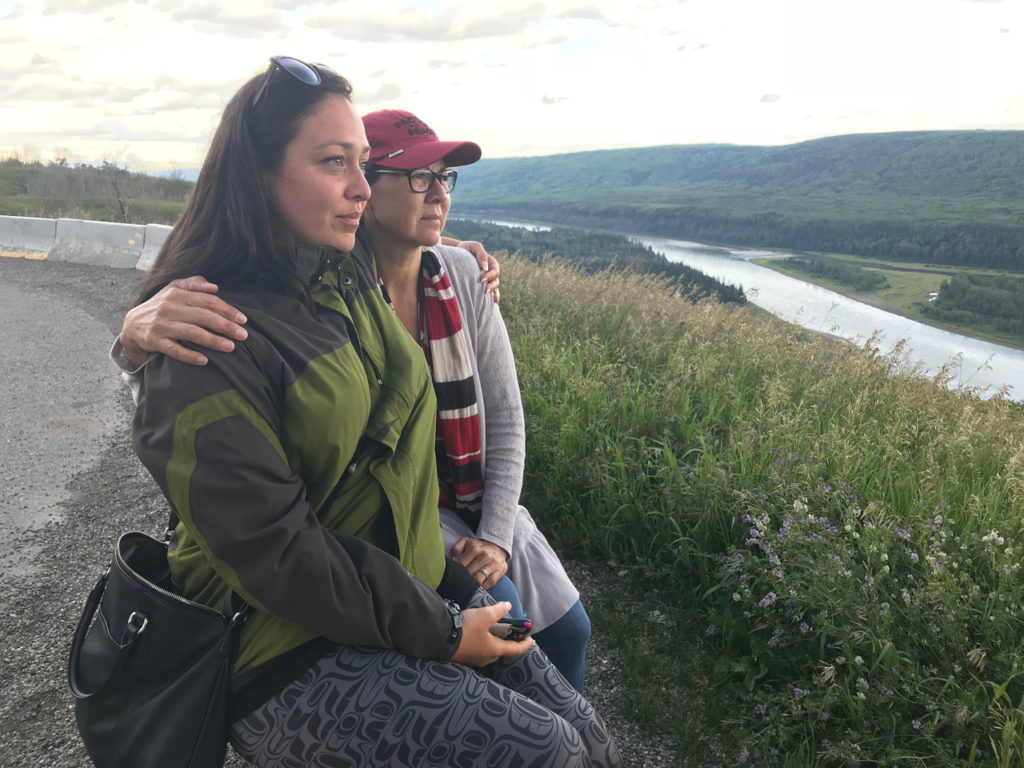
Colonial oppression and the oppression of nature are linked afflictions. This is nowhere clearer than in Heather Hatch’s Wochiigii lo: End of the Peace (2021). Hatch spent five years documenting the protests and legal challenges to Site C, a multi-billion-dollar mega-dam project on Peace River in British Columbia. While the B.C. government argues that power is needed for the greater good, countless experts and community members have concluded the project has little public benefit. The Site C dam will flood 80 kilometres of the Peace River Valley in the heart of Treaty Eight Nations territory. Over 100 species currently listed as vulnerable to extinction will lose habitat there and construction is sure to cause methyl mercury leaks, which will poison fish.
Construction of past dam projects on Peace River involved the forced relocation of the Kwadacha and Tsay Keh Dene nations as their communities were burned to the ground. Wochiigii lo forms a powerful image of the West Moberly First Nations in their fight to preserve Treaty 8 and cease construction. Hatch follows Indigenous leaders, Site C protesters, and Peace River residents through protests and attempts at legal action, along with journalists, and energy experts who speak against bald injustice. Between interviews, trucks rumble across the landscape, turning Peace River into a construction site and pushing the project further along towards inevitability.

Ojibwe activist and environmental theorist Winona LaDuke writes on the “center-periphery relations” that define a western history of colonial conquest: the belief in an endless frontier into which the centre is always expanding, blotting out those on the edge. Wochiigii lo picks up on this truth, revealing the reality of Site C as political fantasy—a “cultural and institutional mindset,” residue of an old political tradition positioning B.C., like the Biblical phrase, as the great “hewer of wood and drawer of water.” A past fortune was made off the land and therefore all developments are good, no matter the violence. In the west, “capital-intensive, resource-extractive industries” push “progress” forward, writes LaDuke, but they promote prosperity while “the reality is stark and destructive.”
While the film is primarily about human struggle, it bears witness to the simultaneous disenfranchisement of people, animals, and landscape. “It’s hard to get into the mind of thinking that the valley is worthless,” says Chief Roland Willson of West Moberly First Nations, a prominent voice in the film, “and then thinking that the valley is worthless, it means that we’re worthless.” Wochiigii lo reveals a dynamic—or “hierarchy,” to speak in ecofeminist terms— in which those in power are not altogether interested in interacting with a systemically othered group. The B.C. provincial government does not imagine the Treaty 8 Nations or the natural world in their independence, but rather as entities ready for movement according to provincial economic and political priorities. To borrow a phrase from ecofeminist Val Plumwood, people and planet become respectable only “in terms of their usefulness to the centre.” It’s a morality of taking and methodically refusing to see the other—a morality which has been convenient in both colonial and capitalist contexts.
Through coverage of individuals from the West Moberly First Nations, their frustration and resistance, and footage of the river, beauty displaced by pock-marked construction dirt, Hatch presents a complex story about Indigenous rights and environmental justice. The film challenges western, dualistic ways of seeing which interpret humans and the natural world as fundamentally detached. Towards the end of the film, Chief Willson notes, “We’re people of the land. You can’t separate us from the land. We’re one and the same. We’re part of the system as the caribou are, the fish are, how the water runs.” Willson refers to a culture with deep roots in its landscape of origin, but also to the fact of being human, which means being part of the natural world, existing in relation to it and reliance on it.

Jennifer Baichwal’s Anthropocene: The Human Epoch (2018), the third film of her collaboration with Nicholas de Pencier and Edward Burtynsky [following Watermark and Manufactured Landscapes], leans deeply into the concept of detachment. Travelling around the world from Norilsk, Siberia to Australia’s Great Barrier Reef, Anthropocene documents evidence of humanity’s massive reengineering of the planet. Locations in the film represent the consequences of our life as consumers, places which have been “terraformed,” altered for perceived human needs, and which many people are completely unaware of and therefore emotionally unaffected by.
Anthropocene is full of visual poetry. The red stripes and shell shapes of the Berezniki potash mine; the 12,000-ton excavator grinding into a mountainside in Immerath, Germany; the gigantic tree in British Columbia, creaking as it succumbs to the saw until collapsing onto the forest bed; the blue-and-yellow patchwork of a lithium extraction site in the Atacama Desert, a lone boat floating gently across the still neon water. It’s all more or less magnificent. There is an easy rapport between the sublime and the grotesque. We sometimes find a thrill in the visual spectacle of our own destructiveness. And aesthetic marvel lends itself to the film’s moral quietude. Baichwal, de Pencier, and Burtynsky are interested in presenting the evidence of what has occurred—not in making a didactic argument.
When I spoke to Baichwal, she expressed her intention to allow viewers to “actually witness places they are responsible for,” and the way they are connected to the people who operate them or live in their shadow. The men in body suits mining lithium for our cell phones. Those who occupy the Dandora landfill site. But “it’s not just connection, you’re there,” she said. Her comment evokes a book by Daisy Hildyard called The Second Body, which rethinks individual boundaries, noting “There are truths about any body—your body—which are not quite the same as the reality of that body’s everyday life.” In other words, “You don’t need to feel the solemn magnitude of your kettle boiling for it to be a matter of solemn magnitude.” Anthropocene implicates the viewer in a vast set of global relationships to which their objects, lifestyles, and desires connect them. All around the world, people, places, and animals live the consequences of our energy use and consumption here in Canada. Baichwal rejects dualistic divisions of human and nature, us and them, hurtling the viewer into awareness of deep integration.
But Anthropocene goes further than to say you’re connected, you’re there. It makes the landscapes themselves the centre of the story, giving ransacked earth a face and a name. Plumwood writes about a concept called “backgrounding,” noting the way that, in Western cultures, “the earth forms the taken-for-granted material substratum of human existence, always present, always functioning, always forgiving; its needs do not have to be considered.” Foregrounding landscapes, alternating scale between big, slow, dream-like panning shots and detailed, close-up images on the ground, Anthropocene subverts this relationship of power. “When you stay at scale you lose something, and when you’re lost in the details you can lose something too,” Baichwal told me in our interview. “It’s that toggling back and forth that have made our environmental films particularly immersive.” This directorial choice creates a lived experience of Burtynsky’s Anthropocene photographic work, bringing the viewer into intense contact with these places. At this point, it becomes very difficult to deny their reality or the obvious problematics of their scale.
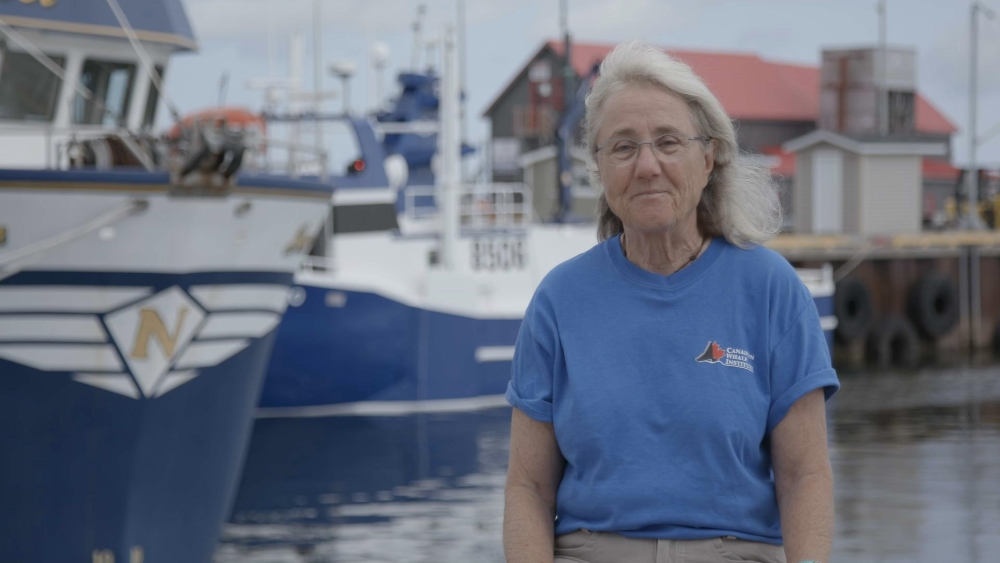
While nature is often backgrounded in western culture, animals are generally subject to what ecofeminists call “radical exclusion.”. We tend to think of animals as utterly different from us, an amorphous life-force with the shared all-around distinguishing trait of not being human. There is little room in this story for kinship. That being the case, it is easy to disregard animal lives and to suppress feelings we might have about damaging their homes and well beings. Nadine Pequeneza’s documentary, Last of the Right Whales (2021), aims to demolish divisions between animals and humans by bringing light to the complex social realities and struggles of the North Atlantic right whales.
Right whales are an ancient species, now critically endangered by climate change, which has forced them to enter heavily fished areas in search of food, where they are at risk of becoming mortally entangled by fishers’ taglines or being hit by boats. Pequeneza’s documentary follows some of the last remaining North Atlantic right whales as they make their 1,600-kilometre migration south for winter, along with the scientists, photographers, and rescuers who look for ways to facilitate their survival.
Pequeneza told me she hoped that viewers would connect with the whales as individuals. “That’s why we name them and follow them through a period of time in their lives.” Viewers have the rare privilege of growing familiar with the whales, including one called Punctuation and another called Snow Cone, and the line between human and animal becomes translucent. We witness the whales’ sociality and watch as events take place in their lives. They are extraordinary to encounter: sometimes swimming side by side, or flipping onto their backs, exposing their stomachs to the sun in a series of movements that read like joyful abandon. Pequeneza couples ecstatic moments with footage of the harsh conditions of their existence. Most tragically, there is the death of a Snow Cone’s calf following sustained injuries after a collision with a small recreational boat. “Everybody we showed the film to when we were testing—everybody cried,” said Pequeneza.
Last of the Right Whales imbues these whales’ lives with gravity and reality. We observe their deaths as part of real lives lived and mourned by the humans who have chosen to value them. Photographer Nick Hawkins, who appears many times throughout the documentary, hopes his photos will restore our enchantment with animals. “Nature is incredible,” he says., “There is so much beauty and complexity and our lives can be so much richer when we let that in.” It’s true that animals and nature can bring intense pleasure and meaning to human lives. Barb Zoodsma of the US National Oceanic and Atmospheric Agency asks: “How important are these animals to us? You know, that’s really what this comes down to.” One might also ask, what is it to lose a source of meaning?
You could argue that certain documentaries are, by their very nature, ecofeminist. It is typical (or, at the very least, possible) in documentary to construct a narrative out of a chorus of voices and to value them evenly, overcoming a “centre-periphery logic” as LaDuke calls it. Many documentaries tend to be anti-dualistic, hosting an interconnectivity of people, places, and perspectives. This is true of all of the films I mentioned in this essay. And maybe it is the key to their activism too.
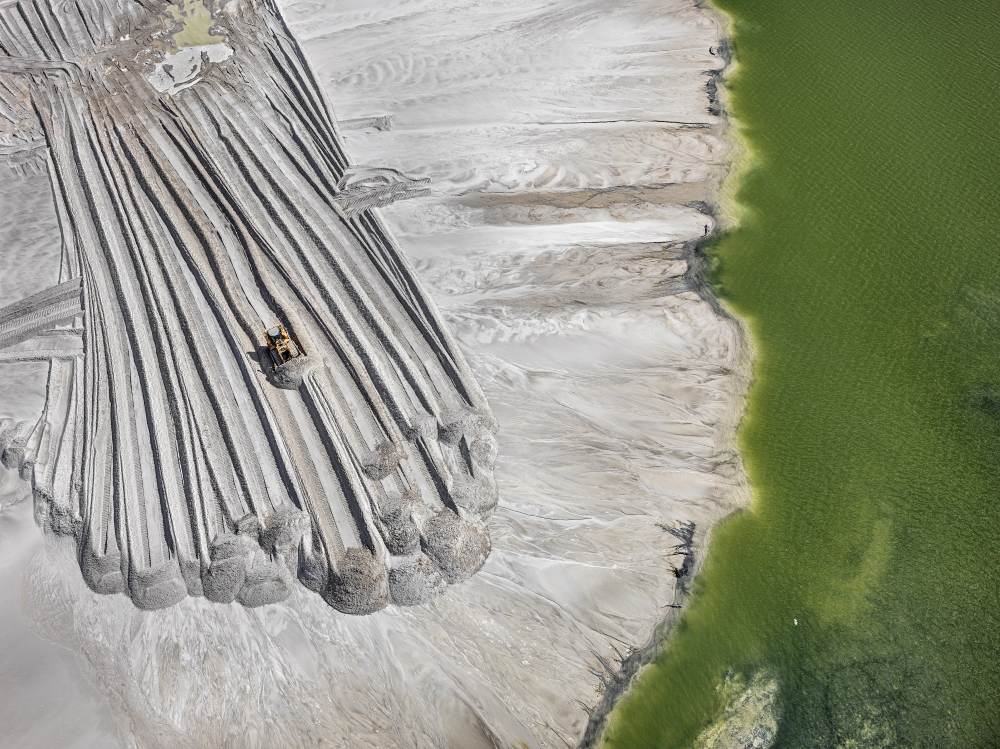
In our conversations, both Baichwal and Pequeneza spoke of their aim to reach the viewer emotionally, viscerally, and intellectually, all at the same time. Baichwal calls this combination of effects “experiential knowing.” It is her response to the failure of polemic to move people. Polemics can be paralyzing, with apocalyptic language alienating as many people as it stirs to action. For Baichwal, when art is functioning properly, it is like a Kantian truth, “that thing in itself,” which cannot be reduced any more, which “holds whatever universality is possible.” Baichwal concludes, “It moves you in all these ways at once, encompassing you from a number of different angles, and it can shift your consciousness in a way that is profound and lasting.”
In The Unreality of Memory, Elisa Gabbert’s book about disasters, she cites a New York Times feature, which reads, “Nearly everything we understand about global warming was understood in 1979.” With 40 years of knowing behind us, she wonders, “Why can’t we or won’t we save ourselves?” There are many true answers to this question, but these filmmakers share elements of a common response. It hasn’t been enough to change minds, they would say, noting that many minds have already been changed, and that most of us are thoroughly against environmental destruction and corporate greed at this point. It is probably not about discovering our own rational self-interest (this has failed to make us budge), or about looking to industry and global capitalism (the things that got us into this mess) to get us out of this mess. Instead, it’s something stranger. Something more like shifting the contours of our vision at the very place where it breaks off into the periphery. Rewriting relationships of power, refocusing our sight, respecting natural limits, and living in a state of knowing reciprocity with the world around us. And we could do it, they would say. We could.




